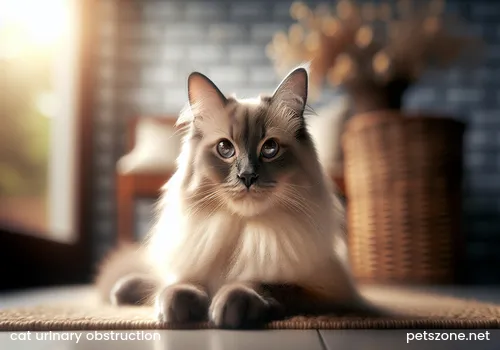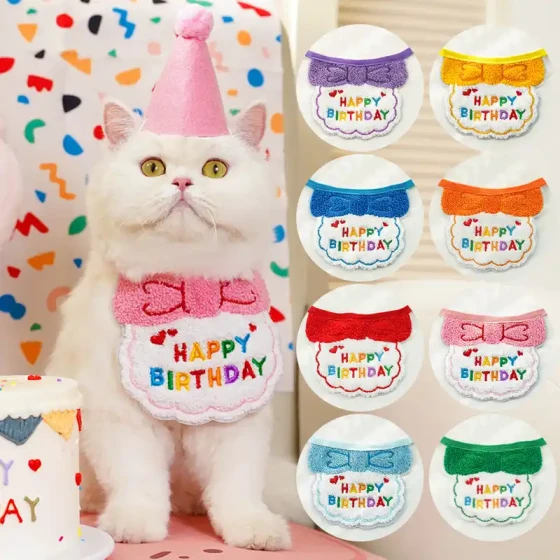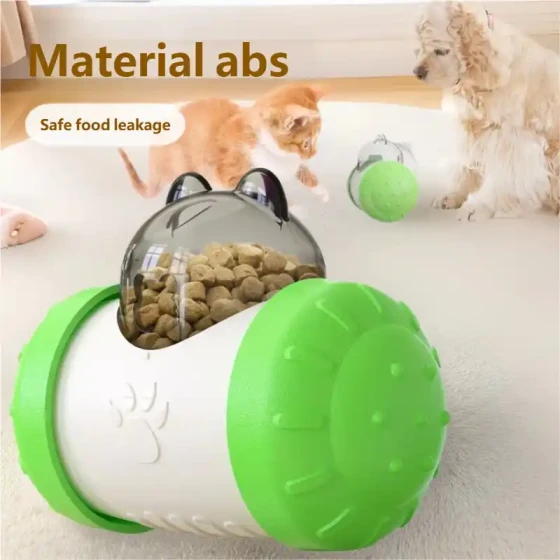Cat Urinary Obstruction_How to Respond in an Emergency
You see your little one squatting in the litter box for a long time with a standard posture, but no urine is coming out. It appears restless and even emits low growls. You might first think of constipation or a stomach upset.
But stop, take a deep breath, and stay calm. Among cats’ urinary system diseases, there is one condition far more urgent and dangerous than you might imagine. It’s not a chronic illness, but a crisis that can take life within just a few hours: Cat Urinary Obstruction (Feline Urethral Obstruction).
This is not sensationalism, but a critical signal every cat owner must recognize and understand. Ignoring or misjudging it could mean an early farewell to your beloved pet.

What exactly is urinary obstruction?
Simply put, urinary obstruction means the cat’s urethra is completely or partially blocked, preventing normal urine flow. Imagine a water pipe completely clogged, with water accumulating inside causing increasing pressure, eventually damaging the whole system.
The cat’s body is that fragile and delicate system. This condition is especially common in male cats due to their urethral anatomy — narrow, long, with an S-shaped bend at the end — making them more prone to blockage than female cats. Common blockers include:
- Crystals or stones: The most common are struvite (magnesium ammonium phosphate) and calcium oxalate crystals. These tiny crystals or formed stones float in the bladder, and once they enter the narrow urethra, they can get stuck.
- Urethral plugs: A more complex mixture composed of crystals, cells, mucus, proteins, and inflammatory secretions, acting like a “cork” blocking the urethra.
- Inflammation and spasms: Inflammation of the bladder and urethra (most commonly feline idiopathic cystitis, FIC or Feline Interstitial Cystitis) can cause swelling of the urethral wall and muscle spasms, leading to functional or structural narrowing.
- Others: In rare cases, it could be tumors, strictures, or trauma.
Why is urinary obstruction a “race against time” emergency?
The keywords here are "toxins" and "electrolytes."
Urine is the body’s outlet for metabolic waste and excess water. Once this outlet is blocked, these wastes (such as urea and creatinine) and excess potassium rapidly accumulate in the bloodstream.
- Toxin accumulation: The buildup of urea and creatinine causes uremia, leading to lethargy, loss of appetite, vomiting, and other symptoms. This is poisoning.
- Electrolyte imbalance: The most deadly is hyperkalemia. Normal heartbeats rely on precise electrolyte balance, especially potassium ions. A rapid rise in blood potassium disrupts myocardial electrical activity, causing arrhythmia and potentially cardiac arrest. This is an extremely fast process that may occur within hours.
- Risk of bladder rupture: Though uncommon, sustained urine buildup can overly distend the bladder, posing a theoretical risk of rupture. More realistically, damage to the bladder wall and subsequent infection are threats.
- Acute kidney injury: High-pressure urine reflux or prolonged stagnation damages kidney function, leading to acute kidney injury.
From symptom onset to life-threatening, only 24 to 48 hours, or even sooner, may elapse. This is not an exaggeration but a painful lesson from countless cases. An hour earlier to the vet can mean a vast difference in survival and recovery for the cat.
Recognizing the signs: the devil is in the details
Cats are masters of hiding pain; they won’t scream out loud like humans. You need to carefully observe subtle behavioral changes. Here are typical signs of urinary obstruction you must remember:
- Squatting in the litter box for a long time with little or no urine: The core symptom. The cat will repeatedly attempt, appearing to struggle hard.
- Frequent visits to the litter box: The cat may feel “unsolved” and keep trying.
- Unusual vocalization: Painful, low groans or yowls during urination. A normally mild-tempered cat may become aggressive due to pain.
- Excessive licking of the genital area: A sign of discomfort and pain.
- Loss of appetite and lethargy: As toxins accumulate, the cat becomes dull and refuses food.
- Vomiting: A common symptom of uremia.
- Abdominal tension or resistance to touch: The bladder may be swollen, hard, and painful due to overfilling. Gentle palpation below the navel may cause sensitivity or resistance. Notice: Do NOT press the cat’s bladder forcefully!
Difference from constipation: When constipated, cats squat to defecate and might pass hard stools or not pass stool at all, but no painful urination or urination posture appears. The key in urinary obstruction is abnormal and painful urination behavior. When in doubt, treat as urinary obstruction and seek veterinary care immediately.
Emergency response: The only correct SOP
If you suspect your cat has a urinary obstruction, remember these three points; they are more important than any complicated home remedy:
- Stay calm but act swiftly: Panic won’t help, but every second matters for the cat.
- Do not attempt any home remedy or self-treatment: Never try to press the cat’s abdomen to force urine out — this may damage or rupture the bladder, causing severe internal bleeding and infection. Do not give any human drugs (such as painkillers) or home remedies heard online—they may be toxic and delay treatment.
- Contact your veterinarian immediately and rush to the hospital:
- Call first: Call your regular vet or nearby animal hospital immediately, clearly stating you suspect your cat has a urinary obstruction, an emergency situation. Describe symptoms and ask if you should come right away and if a doctor is available to handle this emergency.
- Choose an emergency hospital: If your usual hospital cannot see your cat immediately or has no night emergency, do not hesitate to pick a nearby hospital with emergency capabilities. In this case, the hospital’s emergency capacity and speed matter more than knowing the doctor.
- Prepare for departure: Safely place your cat in a carrier and don’t delay.
What happens at the hospital?
The vet will quickly perform a physical exam to assess the cat’s status. They will palpate the abdomen, often feeling a large, hard bladder.
Typical procedures include:
- Stabilizing vital signs: Especially monitoring heart rate, respiration, and dehydration level. If critical, initial stabilization may be done first.
- Blood tests: Key for assessing internal condition, especially kidney markers (BUN, creatinine) and electrolytes (especially potassium). This directly determines if uremia or hyperkalemia risk exists.
- Imaging exams: X-ray or ultrasound may be needed to check bladder size, see stones, kidney status, etc.
- Relieving the blockage: The core treatment. Usually under sedation or general anesthesia, the vet will try to flush the blockage back into the bladder or push it out through a catheter to restore urine flow. This is a delicate, experience-dependent procedure.
- Hospitalization: Most cats with urinary obstruction need to stay in the hospital for a few days after relief. During hospitalization, the vet will:
- IV fluids: Correct dehydration, flush the kidneys, and more importantly, help expel accumulated toxins and reduce potassium.
- Indwelling catheter: Keep the urethra open, monitor urine output, and let the bladder rest and recover.
- Pain relief and anti-inflammatories: Alleviate pain and control urethral inflammation.
- Muscle relaxants (possibly): Help relieve urethral spasms.
- Regular monitoring: Observe mental state, appetite, blood markers, and electrolyte levels.
- Identify cause (if possible): Check urine samples for crystals or use other tests to find the root cause for follow-up treatment and prevention.
This is just the “first step of a long journey”
Successfully relieving obstruction and discharge does not mean the problem is fully solved. Many cats have underlying susceptibilities, especially feline idiopathic cystitis and crystal issues. Recurrence risk is quite high.
Post-discharge care and management are equally important:
- Follow medication instructions: Give anti-inflammatories, painkillers, muscle relaxants as prescribed.
- Switch to prescription diet: Usually, vets recommend specialized urinary prescription food, such as formulas that dissolve struvite crystals or prevent calcium oxalate crystals. Strict diet adherence is key to preventing recurrence.
- Increase water intake: Encourage your cat to drink more water to dilute urine and reduce crystals formation. Try running water dispensers, multiple water bowls, or feeding wet food.
- Reduce stress: Feline idiopathic cystitis is closely related to stress. Provide enriched environments (multi-level spaces, scratching posts, toys), stable routines, and use products like Feliway to reduce stress.
- Regular check-ups: Follow vet advice for regular hospital reviews to check urine and recovery progress.
Final words:
Cat urinary obstruction is not a simple cold or cough; it is a genuine life threat. As your cat’s guardian, the most important thing you can do is recognize those subtle abnormal signs immediately and get your cat to a professional vet as fast as possible.
Do not be misled by all sorts of non-professional advice online, and do not take chances thinking "just wait and see." Speed and professionalism are your only chances between life and death.
We hope all cats stay far away from the suffering of urinary obstruction. But if misfortune strikes, remember: stay calm, recognize, and seek immediate veterinary care. This is the most precious "first aid" you can give them.



